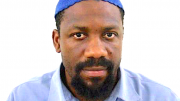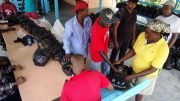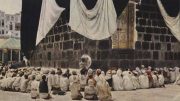Introduction
The pioneers of the Muslim community in the former British Guiana, now the Republic of Guyana, built its foundation. Subsequent generations have built upon these foundations to have a flourishing faith-inspired community we have today. We need to remember the lives and sacrifices of our pioneers. They should be held up as an example of service to God, community and nation.
Among such dedicated and respected servants was an Imam/Meajie (a prayer leader), Ustaad, who resided on the East Bank of Demerara. Ustaad is an honorific title historically usually used for well-regarded teachers. Like many in the old days, he was born to Indian immigrant parents from Peshawar and Rai Bareilly who were brought to British Guiana on the “SS Jura” in 1898 by the British. The “SS Jura” was one of many ships which transported East Indians to British Guiana and the West Indies as labourers under the indentureship system. He grew up on the sugar estate where he and his siblings were born and lived with his parents, who spoke very little English. At an early age, he learned his parents’ native languages Urdu and Hindi.
Physically, he was tall and thin-built. When he walked, his strides were full of confidence, grace and humility, and his head always held high with dignity and self-esteem. His Pathan features were clearly evident. He was very articulate and concise in his presentations and sermons, and the power of his voice commanded keen attention when he spoke, in both English and Urdu.
From an early age, his life was full of meaningful events. Before reaching his teenage years, his schooling was cut short due to his father falling ill, causing him to go to work on the estate so that he could help support the family. Although he was from a poor and simple family, he soon realized and understood some of the social injustices within the community. He made it part of his effort to fight for better conditions for the masses on the estates.
Community Activist
In 1924, the sugar workers on the East Bank were on strike for better living and working conditions. They were advised by Mr Francis Kawall, leader of the British Guiana East Indian Association, not to go marching and protesting towards Georgetown. However, the advice was not heeded. So, when they reached Ruimveldt (on the outskirts of Georgetown), the police were ordered to shoot resulting in 13 killed and twenty-four injured.
Ustaad, as a young hero fighting for democracy and social justice, was at the forefront of this protest march. Being involved in protest activity, as well as advocating for the estate workers, led to Ustaad being blacklisted and banned from his home estate and other estates in the region. This banishment from the estates practically ruptured his contact with the workers. His fight for better living and working conditions for the indentured workers were effectively stalled. He began to immerse himself in a quest for education and as well as a continued search for Islamic education.
Displaced
Being banned from the estates, Ustaad moved from the East Bank to the West Coast of Demerara. Here he lived and worked with relatives in their rice fields while keeping his mind occupied with acquiring and increasing his religious knowledge from the learned old-timers. He also taught at the maktab – a neighbourhood school, attached to the mosque, that provides religious education to children who attend other schools to get “mainstream” education.
Shortly after that, Ustaad moved from the West Coast Demerara to Cane Grove on the East Coast of Demerara. Here he was given the opportunity to become Imam/Meaji and an Ustaad, thus enabling him to grow and excel in these roles.
Education Opportunities
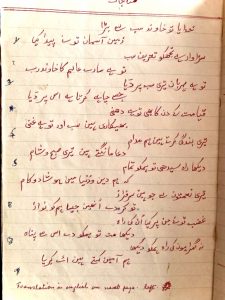
Ustaad written Urdu
In the late 1930s, Ustaad returned to the East Bank as Imam and Ustaad. A new avenue to fulfil his desire to increase his religious knowledge opened up. Mustafa Sayeed Gilles aka Jilks, who was originally from Ghana, was then living in British Guiana. He was a Hafiz- Al- Quran (one who memorized the entire Quran), helped Ustaad to read and recite the Quran with authenticity in its Arabic text. Jilks was also an Engineer. He worked for the Estate Endeavor. Period around 1920 in Guyana to around 1951 (died).
Ustaad’s blessed ability also enabled him to teach himself Urdu grammar along with Farsi and Sanskrit. Mastering the grammatical forms and nuances of the Urdu language would later prove to be a valued skill in understanding and explaining religious texts. After attaining proficiency in the Urdu language, he became one of the country’s top Urdu scholars.
Imam Shakir Hussain brought from India to British Guiana some of the authentic religious texts on jurisprudence, fiqh and sunnah which Ustaad studied. Imam Shakir migrated to British Guiana with specialized status as an Imam, to serve the religious and spiritual needs of the estate bound Muslims. He was based at an estate on the East Bank of Demerara. Upon his passing, Ustaad was fortunate to obtain some of these texts from Imam Shakir’s family. Ustaad’s proficiency in Urdu enabled him to understand and to translate these books. Access to books was limited in this era, and it was a rare opportunity for Ustaad to be able to put together an essential library. This library helped him immensely to resolve many arguments and disputes that arose within the growing Muslim community countrywide. Ustaad was able to clarify and explain ambiguities, misinterpretations and discrepancies with references from his authentic collection of books. These interventions were critical to Ustaad’s acceptance as a respected teacher and wise counsel to members of the community.
Imam, Teacher, Community Leader
Ustaad’s return to the East Bank was also the start of his lengthy tenure as an Officer of the United Sad’r Islamic Anjuman. In 1949, he was elected a Junior Imam and Junior Secretary of the Anjuman.
Ustaad’s struggle continued during his tenure as Imam of Providence Masjid. On this occasion, he was seeking to have the Sugar Estate’s Management transfer legal title of the Providence Masjid to the Muslim Community. Ultimately Ustaad’s effort was successfully resolved without any shooting or protest.
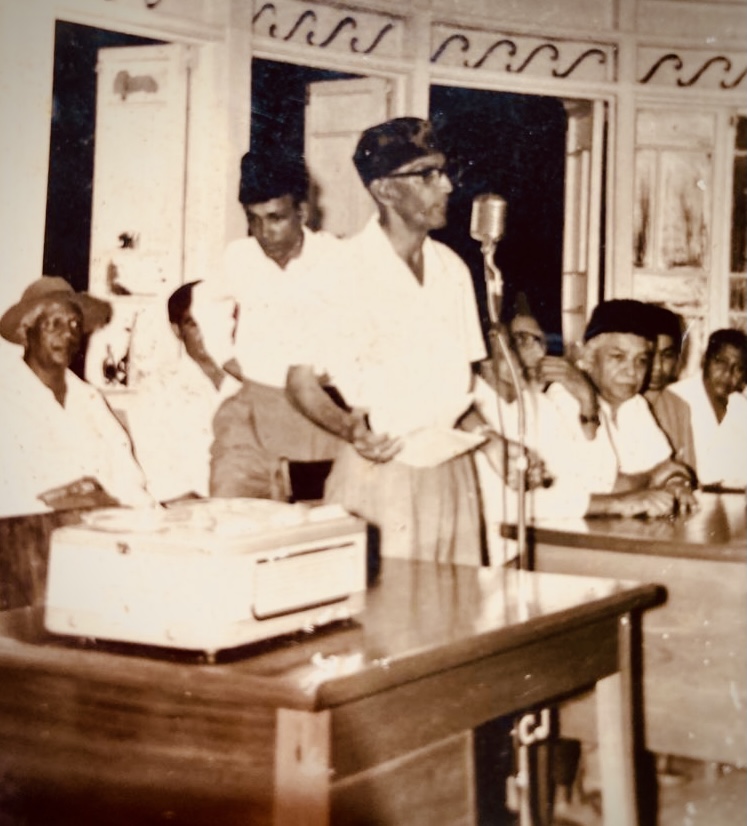
Haji SM Shakoor MBE at the mic, to his right is Ustaad, who is next to Abdool Majeed
In 1954, both his wife and mother-in-law passed away. Within 3 months of this dual loss, he began a journey into the hinterland as the Travelling Secretary of the Anjuman. At this time he was fifty years old. He left his young children in the care of relatives. He then travelled to the Essequibo Coast visiting ten Jamaats including Jacklow Pomeroon. All for the pleasure of Allah (SWT). Amazingly, he left the East Bank of Demerara on a bicycle and returned home on his bicycle! This is a feat which boggles the mind for those who are familiar with travelling in British Guiana back then — on a bike from the East Bank of Demerara to the Essequibo Coast and back. Here was this simple, unassuming devotee with total reliance and trust in his Rabb, Allah (SWT). He was blessed in many unique ways, possessed an unlimited amount of talent, filled with fortitude, devotion, patience and dedication, and lived his life with sincerity and simplicity. Allahu-Akbar (God is Greater).
In those days, jamaats from Berbice to Essequibo, right across the country, were experiencing discord among the membership and various other problems within their communities. There were bitter arguments caused by internal divisions and conflicting opinions between factions over many and varied issues.
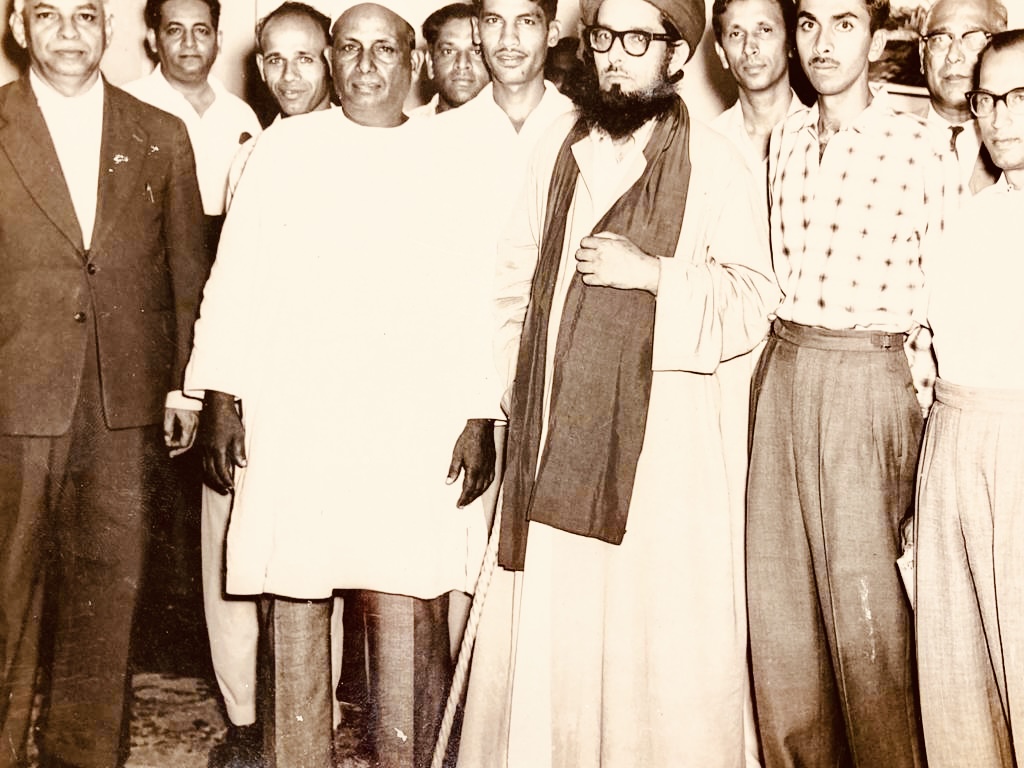
Standing (l to r): a Brother, Mr Abdool Majeed, a Brother, Mr Samad Shakoor, Haji Ramzan, Abdool Ghanie, a Brother, Moulana Ansari, Mr Yacoob Ally, Mr Moneer A. Khan, Mr A. D. Hack, and Haji S. M. Shakoor, MBE. c1960
When Mr Abdool Majeed became the President of the Anjuman, our Imam was afforded the responsibility of also being the advisor and close confidant of Mr Majeed and the Officers of the Anjuman. Mr Ala Baksh and others also offered guidance on the affairs of the Anjuman.
On one occasion Ustaad was asked about his frequent out-of-town trips and returning late at night or early morning. He responded, “Jamaats everywhere are having squabbles and disagreements, and we (the officials of the Anjuman) have to go to help resolve their disputes.” (advice of the Quran and Sunnah).
A few years ago, a contemporary of his reported on a situation of which he was aware, at a masjid on the East Coast of Demerara. He said that Ustaad and officials from the Anjuman came to the jamaat to help resolve a serious problem between two factions of the jamaat. By the stroke of midnight, neither one of the two parties in disagreement was willing to compromise and agree to an amicable settlement. Ustaad made an unorthodox but effective move. He decided to lay across the table and said that he was prepared to stay there until the next day if necessary until a settlement was reached. Within an hour, and with more positive and friendly deliberations, compromises were made, and a satisfactory settlement was reached. There are many more similar stories of these heroes who came before us and laid the foundation, paving the way for the growth of the Muslim community.
The Diplomat
In 1948, His Excellency Haji M.A.H. Ispahani, Ambassador to the USA of the newly formed independent nation of Pakistan visited British Guiana. The formal address of welcome to the Ambassador commemorating his visit was to be delivered in Farsi by a prominent businessman and Muslim elder Mr Sardar Mohamed, at the Queenstown Masjid. The assignment was entrusted to Mr Mohamed, who also prepared the address because he was considered to be the only person who possessed proficiency in the language. The Ambassador’s hosts were confident that words of welcome in Farsi would be received with warmth, given that he spoke Farsi fluently.
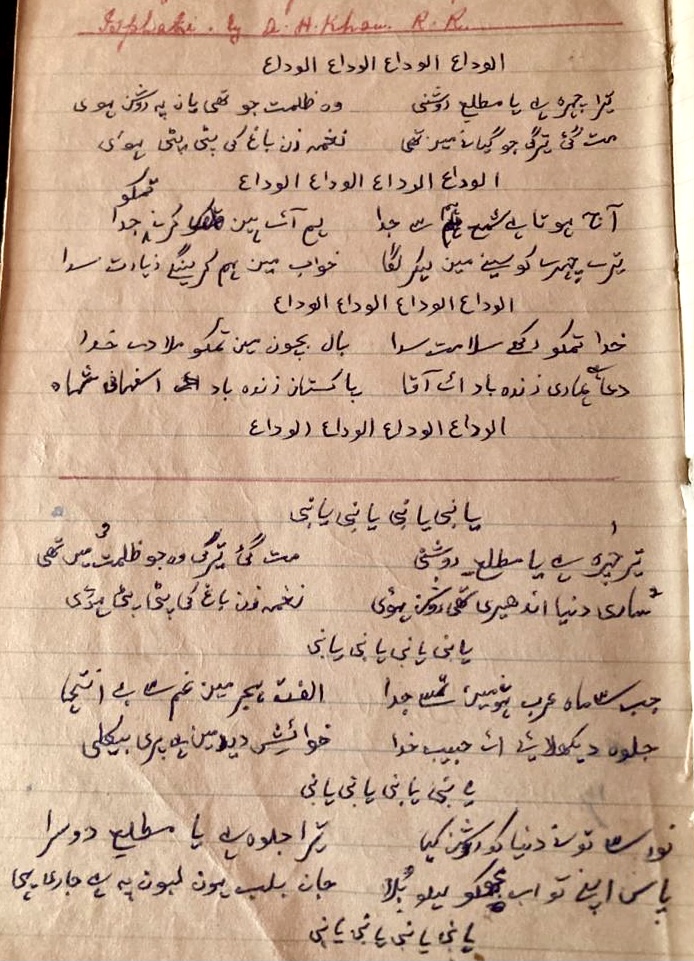
Picture of original nazm composed by Ustaad on the departure of M.A.H Isphahani, Pakistan’s first Ambassador to the USA, at the culmination of his visit to Guyana in 1948
Mr Mohamed became ill unfortunately and was unable to deliver the welcome address. There was a frantic search in the time available before the curtain rose on the welcome ceremony. Word travelled as quickly as the communication resources of the day allowed. Futile requests were made of many community leaders, but there were no volunteers for the task at hand.
Mr R.B. Gajraj was mainly responsible for Ambassador Ispahani’s visit. He was advised to get in touch with Ustaad who was hardly a household name in the Muslim community upper echelons at the time. When Ustaad agreed to make the opening address as intended, there was noticeable relief and delight. Ustaad’s eloquence, diction and overall presentation in Farsi won the admiration and affection of Ambassador Ispahani and all of those in attendance. For Ambassador Ispahani’s farewell function at the end of his visit, Ustaad composed and recited a munajaat (a supplicatory prayer) in his honour. This became a monumental moment in Ustaad’s service to God and His creation. As subsequently, his work attracted enormous attention and support afterwards. Mr Gajraj (later to become Mayor of Georgetown, Speaker in the House of Assembly and an Ambassador himself), was instrumental in helping Ustaad gain access to the people and resources which made a positive difference and facilitated his efforts.
In The Service Of Awliya (Friends of God)
During the visit to British Guiana of Moulana Shah Abdul Aleem Siddiqui and his son-in-law Moulana Dr Fazlur Rahman Ansari PhD in 1950, Ustaad became the designated travelling partner of these two esteemed missionaries. The consensus was that he was perhaps best qualified to represent the interests of both the visitors and hosts with clarity and understanding. The Moulanas’ visit influenced him and some others to become mureed (disciple) of Moulana Siddiqui. An initiation ceremony took place at Haji A. Hack’s residence in Georgetown.
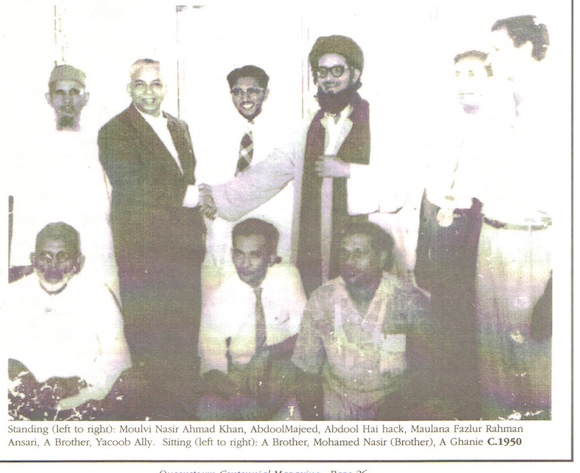
His Eminence Muhammad Fazul-ur- Rahman Ansari (ra) [1950- Guyana], Ustaad is sitting front row on the left
In 1962 Moulana Dr Ansari revisited Guyana, Ustaad was in the forefront of the planning of Moulana’s itinerary and travelled with him everywhere. Moulana Dr Ansari inspired many who met him and with whom he had many teaching sessions and discussion on matters related to faith. Among those who were to subsequently gain wide recognition and acceptance as teachers and missionaries were: Ustaad Hanif Bagh Khan, Sheikh Kayume Khan and brother Rayman Shaw. These brothers especially began a life-long journey of teaching and becoming missionaries of Islam with Ustaad as their chosen mentor.
Community Representative
Ustaad’s work as Imam and Anjuman Officer also enabled him to have intelligent and meaningful dialogue in meetings with prominent local dignitaries including the colonial Governors of the day, Government officials and leaders of business, industry and commerce. The Muslim community’s perspective on matters pertinent to the time was communicated to the Governors, Government Ministers, politicians, the Chamber of Commerce, Civil Service Association and other influencers of public policy. Recognition and understanding the significance of Muslim religious observances and practices had positive results. These foundational influences have been institutionalized into the reality of today’s Guyanese society.
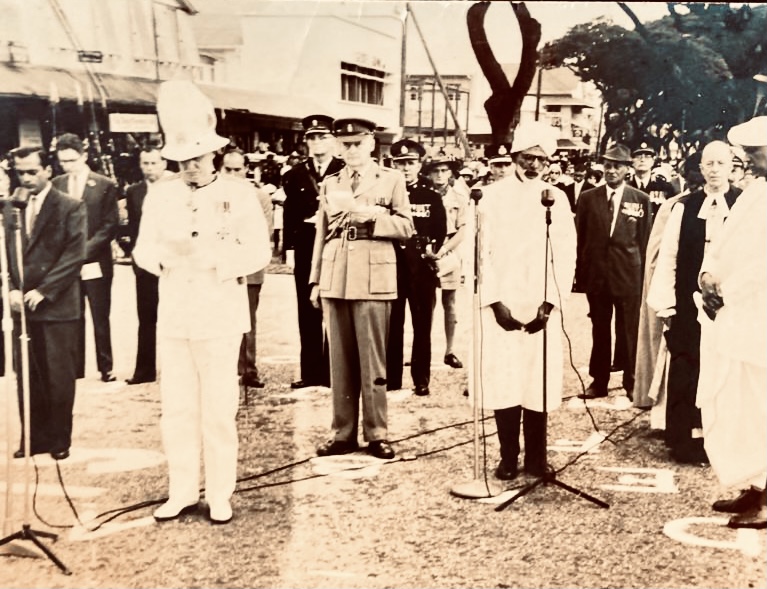
Interfaith Remembrance Day Ceremony. Standing: left to right: at microphone, Minister Balram Singh Rai, Governor Sir Ralph Grey (in white). Standing at the other microphone is Ustaad. c1960
His participation with leaders of other faiths in interfaith dialogue was an on-going effort and facilitated acceptance among all religious groups. Representation to Government on matters of common interest was thus made in unison, and all groups benefited from Government policy as a result. Representing the Anjuman and the Muslims brought him immense satisfaction, and he accepted this responsibility with great honour and pride. He was revered for his knowledge of Islam and ability to teach, communicate and offer wise counsel. He was always consulted by Muslims and non- Muslims alike on religious and non-religious matters.
Ustaad was selected to represent the Muslim community in the early 1960s at the first interfaith Remembrance Day ceremony pre-independence. Until that time, the participants at this solemn ceremony, held at the Cenotaph in the heart of the capital Georgetown, included mainly the British Colonial Office’s representatives in the country and selected prominent local officials and clergy. The local constabulary and military, always in attendance, added to the dignity and sanctity of the occasion.
The significance of that year’s inclusive Remembrance Day ceremony was recognized by all Guyanese. Ustaad stood with grace and humility and made his presentation with eloquence and sincerity. The ceremony was broadcast over the radio and citizens knew then that a nation-wide significant social change had occurred. Some of the other official participants that day included Sir Ralph Grey, Governor, Dr Alan John Knight, Bishop of British Guiana and Archbishop of the West Indies, Mr Balram Singh Rai, Minister of Home Affairs and an eminent Pundit from the Hindu community.
In 1962, Ustaad visited some of the West Indian Islands as an ambassador on behalf of the Anjuman. He travelled to Trinidad, Barbados, Grenada and St. Vincent, shouldering the enormous responsibility of representing the Muslims of British Guiana. He met with many local Muslim and civic leaders in the spirit of peace, understanding and brotherhood. It was a task undertaken and completed with pride and dignity in the service of Allah (fisabilillah).
Radio Program Producer And Host
Ustaad’s voice was a permanent fixture for many years on the Anjuman’s radio programs. He produced and presented programs on Islam and enlightening the Muslim masses on various aspects of their religious duties, practices and festivals.
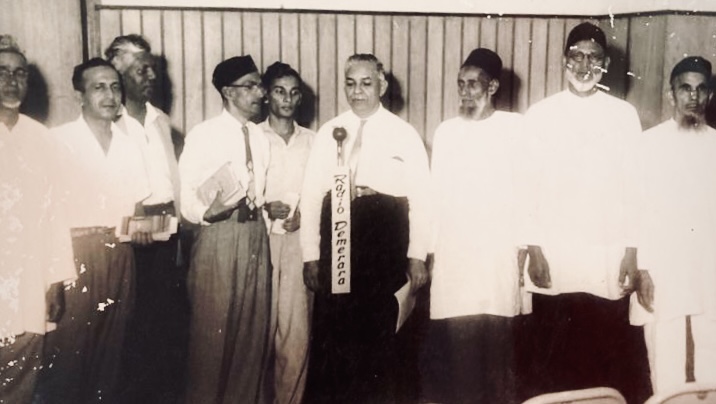
Radio Demerara Program. Standing: left to right, Moulvi Hukumdar, Brothers Sabit Ali Khan, Ala Baksh, Haji S.M. Shakoor, MBE, Haji S.M.Zakir, Mr. Abdool Majeed (at microphone), Haji Ghulam Abbas, Ustaad, and Moulvi Naseer Ahmad Khan.
Teacher And Guide
Across Guyana, Ustaad officiated and conducted wedding ceremonies and many religious functions. He earned respect and admiration from all who knew him and had knowledge of his work. Many of his contemporaries are no longer with us; however, there are still a few, who as young men, knew him on a personal basis. They sought to learn from him, and teach the glorious religion of Islam in near and far places. Two members of this group are Sheikh Kayume Khan who resides in Canada and Imam Haji Khaleel Hussein who lives in Florida. Imam Jabar, Rahmat Meajie, Moulvi B.H.Chand, S.M.Shakoor MBE, Haji Ramzan, Ustaad Hanif Bagh Khan, brother Rayman Shaw, Imam Sheikh Shamsheer (Samsodin), Edoo Meajie, Moulvi Naseer A. Khan in addition to Mr Abdool Majeed, Mr Ala Baksh and many others, were also close confidants and notable contemporaries of his time.
The Muslim marriage certificate used during the 1950s and 1960s was a document designed and put in place by Ustaad. Further evidence of his creativity, resourcefulness and practicality. Subhan Allah (Glorified be God).
The late Shaikh Gulshair Muhammad El-Shukri Jumu’ah, in his early days, was one of Ustaad’s acclaimed student and was known internationally. Following in Ustaad’s footsteps as Imams and teachers were his own sons, and now his grandsons have taken the torch and are also prominent Imams. A great-grandson has gone a step further and is a Hafiz-Al-Quran. Many others whom he taught and counselled continue, in their own capacities, the stellar contribution which Ustaad made to the understanding, practice and growth of Islam in Guyana and beyond. An incredible, blessed legacy.
Some who knew him have suggested that Ustaad was ahead of his time in his thought processes and vision which encompassed a wide array of disciplines. A religious leader and teacher, social reformer, philosopher and thinker, environmentalist, counsellor and politician; all wrapped up in this one grateful, humble servant of Allah.
Premonition
The Estate’s Management made changes to the faith-based division of the cemetery. The Muslim Community were allocated unfavourable burial spots at the rear of the cemetery. This was near the River, which was susceptible to flooding and muddy conditions. Ustaad fought for a change of the location of burial for Muslims. His favourite remarks whenever this issue was brought up were “I may be the first to be buried there once this location is allocated to the Masjid”. Fate would have it that after leading the fight for reallocation and the Masjid’s request was approved and granted, Ustaad was the first one to be buried in the new area.
At his death on 15th April 1965, he held the distinguished title of being the Chairman of the Board of Ulamas of Guyana. Ustaad lived most of his life at Providence estate and Providence Pasture, and most of the years of being Imam was spent at Peters Hall and Providence.
There is more that may be written and said about him and many other unsung Guyanese Muslim pioneers. It is hoped that this presentation may give some perspective as to the journey we have travelled as Guyanese Muslims. That it may inspire us to continue contributing and building our faith community. The struggles and dedication were immeasurable in the time and environment in which our pioneers survived and served. With the limited resources available, their efforts must be recognized, and they must be commended for paving the way and preserving the path for future generations. Alhamdulillah (All praise for God).
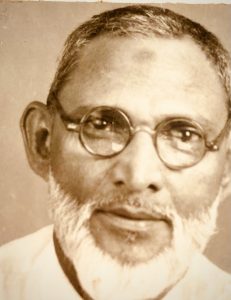
Ustaad
We humbly beg Allah (SWT) to bless Ustaad and the countless others. They dedicated their lives and efforts to building the Muslim community of Guyana and serving His Prophet Muhammad (saw) to advance the compassion owed to God’s creation. May Allah (SWT) accept their sacrifices.
The clippings and notes presented in this testimonial are from Ustaad’s personal journal and are in his own handwriting. The photographs are from his family’s collection. Finally, it is with a deep sense of love and affection that we recognize his most outstanding contribution as being our father. His name is Abdool Ahmad [Hamid] Khan aka Jilwa Meajie. (We love and miss you Pa)
A BRIEF HISTORY OF USTAAD’S ANCESTRY AND FAMILY
His father, Shamsher Khan and his mother, Rahima both travelled on the SS Jura in 1898 when they came to British Guiana (BG). They arrived in British Guiana on 24th December 1898. Rahima and Shamsher were both bounded to Plantation Providence Estate where they lived and died.
The time of indentureship for Shamsher and Rahima ended in 1904. It might be an educated guess to say that while they travelled individually; they got married during their time of indentureship.
Shamsher migrated from North-Western Frontier Area (now Peshawar) to BG. He was a young man of 19 years old. On the other hand, Rahima came to BG from Rai Bareilly, Uttar Pradesh. She was a young lady of 22 years old. Information taken out of the Sugar Estates’ Register of Demerara, shows their Indentureship numbers. Shamsher’s Registration number – 79306 and his Certificate of Exemption number – CE88 of 1904. Rahima’s Registration number – 79298 and her Certification of Exemption number – CE95 of 1904.
Certificate of Exemption: A Certificate of Exemption is given after the time of completing 5 years of indentureship. Information was acquired from records of The National Archives of Guyana.
Shamsher and Rahima had three children:
- Abdool Ahmad Khan – Ustaad, Eldest– Born, October 1904 – Deceased, April 1965
- Zohra Khan/Ishmail – aka Jaitoon (Zaitoon – PuPu), Deceased
- Abdul Karim Khan – (ChaCha), Deceased.
Ustaad, with his first wife, Bibi Ameeran; were parents to 3 children namely:
- Kassim A. Khan – 93 years old – Eldest of Ustaad’s children Resides in Toronto
- Mohamed A. Khan (aka Ayube) Deceased – Former Officer of Guyana Police Force, and Ex Imam of Peter’s Hall Jamaat
- Saferool Deceased
Ustaad, with his second wife Bibi Zaitoon; were parents of eleven children namely:
- Sonoo Deceased
- Mohamed Yacoob Deceased
- Nazeer A. Khan Resides in Toronto
- Basheer A. Khan Deceased – former Imam of Peter’s Hall Jamaat, his son, Shazim Khan – also former Imam of Peter’s Hall Jamaat
- Bibi Shereen Deceased
- Bibi Feroza Khatoon Resides in the NY – her son, Mohamed Shafique Chace – Imam, Khateeb and Interfaith Contributor – Westchester, NY
- Bibi Sakina Bano Resides in UK
- Mansoor A. Khan Resides in NY – Former President, Islamic Sunnatul Jamaat of Bronx, NY, – Director/Secretary – Blue Horizon Charity Inc. – Registered Non-Profit Organization
- Bibi Hasina Khanam Resides in Florida — her grandson – Esa Ahmed Jaffar – Hafiz Al Quran – Florida.
- Bibi Hanifa Khanam Deceased
- Bibi Noor Bano Khanam Deceased
Ustaad has left a worshipful line of descendants, which also consists of:
44 grandchildren
82 great-grandchildren and
60 great-great-grandchildren – Many of whom resides in the USA, Canada, UK and Guyana.
We pray that Allah [SWT] forgive their mistakes and bless them with a special place in Jannatul Firdous. Ameen.
Acknowledgements: Kenty Khan, Eldest of Ustaad’s grandchildren (Eldest son of Kassim Khan), Bibi Amina Zaitoon – Khan, youngest of Ustaad’s daughters-in-law (daughter of Haji S.M.Shakoor, MBE)
May Allah Bless them for their help and input…Ameen.

